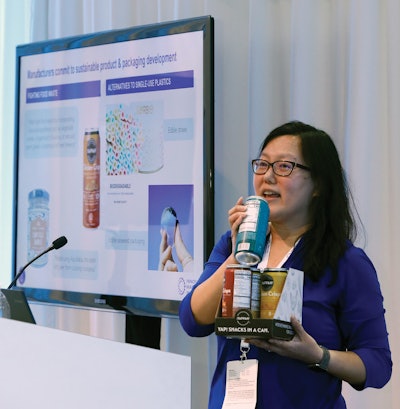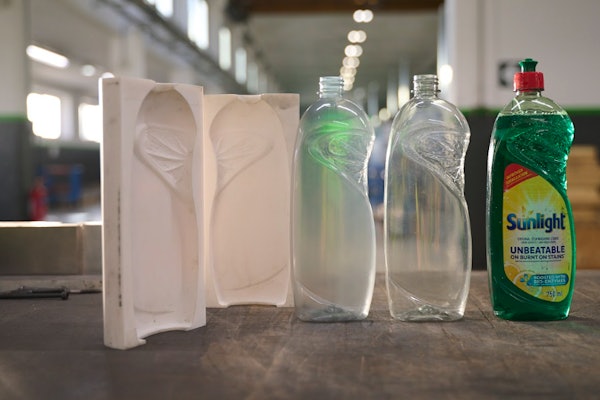
In 2018, Mars Inc.’s M&Ms solicited votes from consumers on which flavor they should add to the M&M’S line-up—they ultimately chose crunchy mint. And the feedback was overwhelmingly positive, which brought back the vote for new flavors this year. Consumers will be choosing between three new flavors for the M&Ms—English Toffee Peanut, Mexican Jalapeno Peanut, and Thai Coconut Peanut. For years Mondele-z International’s Oreo brand has been surveying its consumers for new flavor ideas, allowing them to create flavors like cherry cola, kettle corn, and piña colada.
These flavors may seem a little outside of the box for chocolate covered candies and cookies, but they fall right in line with what consumers are looking for. According to Innova Market Insights, more than 60% of consumers in the U.S., U.K., and China, are using their discovery of new flavors to drive their purchase decisions. The voting and new flavor contests are promoted on packaging designs that are clearly different from the typical brown and yellow M&M bags and blue Oreo trays, ensuring that consumers feel like they discovered something new. Aside from M&M and Oreo, more than 17% of average annual growth of food and beverage launches included a “discovery claim” on their package at the global level between 2014 and 2018. Discovery claims on packages include KitKat’s newest chocolate bar made with Ruby cocoa beans, which states “Discover a new chocolate experience” on the new pink- and crème-colored wrapper.
Consumers are also looking to add surprise to their grocery shopping experience—in both the foods they consume and the packaging that ultimately influences them to purchase. Basiron, a Netherlands-based cheese brand, prides itself on surprising consumers with green-, red-, and lavender-colored cheese, and one of its iterations is a black lemon cheese. The black cheese is wrapped in yellow wax that boasts lemons, which would stand out in any cheese market.
“Food companies are trying to create an element surprise with their products and their packaging,” says Virginia Lee, Insights and Innovations Manager, Innova Market Insights.
Plant-based market is here to stay, prompting brands to go green
On the opposite end of candy, consumers are more health conscious than ever. More than 40% of consumers in China, France, and Brazil have changed their diets to include more fruits, vegetables, and plant-based proteins for healthier living, according to Innova Market Insights. In fact, eating a plant-based diet has officially become mainstream, and brands are “greening-up” their portfolio to attract consumers who want plant-based items. Both dairy-free alternatives and meat substitutes have risen by more than 15% on an average annual basis since 2014 in the number of global launches, with one in two U.S. consumers citing health as a reason for buying alternatives to bread, meat, and dairy, followed by diet variety, novelty, and sustainability. Adapting to this rise in demand, the number of beverage and food launches with a vegan claim has increased by 33% on an average annual basis since 2014.
The demand for plant-based alternatives to meat and dairy is creating opportunities for new and small companies to enter the marketplace with creative protein options. These grass-roots efforts are also inspiring larger companies to invest in startups or create alternative products of their own, as the number of food and beverage launches with plant-based claims has grown 64% from 2017 to 2018.
“Major players are going small with their strategies to appeal to consumers,” Lee said.
Sustainability also plays a role in the increase in plant-based diets, and consumers are putting their dollars behind brands that prioritize sustainability—not only in their product packaging and food, but also down to corporate initiatives and production. In response, brands like Kellogg’s, Coca-Cola, and Unilever have adopted sustainability initiatives that drive value for their business, people, and consumers. The two biggest sustainability desires from consumers are fighting food waste and developing alternatives to single-use plastics. And brands are answering as they try to reduce waste from all angles. For example, U.K.-based Rubies in the Rubble’s chipotle mayo uses aquafaba—the water left over from cooking chickpeas. Barcelona-based Sorbos has developed edible straws, and according to Innova Market Insights, edible seaweed packaging is also in the works for liquids.
“Consumers today are expecting an investment in sustainability from both large and small companies,” Lee said.
Products are getting snack-sized for convenience
While more health conscious, consumers are also in a hurry, demanding more snack sizes from their go-to products. Millennials are the main factor behind the rise in snack-sized portions. In fact, 63% of the generation is replacing meals with snacks, due to busy schedules, according to an Innova Market Insights survey of consumers in the U.S., U.K., China, Brazil, France, and Germany. While Generation X and baby boomers are cutting down on their sweet snack consumption to promote a healthier diet, this doesn’t mean that older consumers don’t have a need for snacks, rather, it’s prompting brands to shrink favorites like peanut butter and guacamole to be more snackable.
“We are seeing more companies that are snackifying their products,” Lee said. “And we are also noticing more vegetable-based snack options to appeal to health conscious consumers.”
Eat well, feel good
Ultimately, consumers are interested in having a choice and a voice, as well as feeling good about what they eat. There is a rising interest in the role nutrition plays in emotional wellbeing, as the number of product launches featuring words such as “happy” and “joy” on-pack have increased by 21% on an average annual basis since 2014.
Continuous Improvements Forums at ProFood Tech
Now a staple of the PACK EXPO portfolio of trade shows, a Vision 2025 session at ProFood Tech 2019 brought together food and beverage processing professionals to address consumer and customer demands and the effect this mass customization has on production operations. While the full report is due for release soon, preliminary findings focused on a need for deeper—and earlier, if not immediate—communication between cross-functional groups, including OEMs and CPGs. In addition to opening the lines of dialogue for better partnerships, better and quicker changeover times for machinery ranked as a consistent theme.
Be on the look-out for the complete Vision 2025 report from ProFood Tech and visit pwgo.to/5007 for previous Vision reports.
Vision 2025 returns to PACK EXPO Las Vegas and the co-located Healthcare Packaging EXPO (Sept. 23-25, 2019; Las Vegas Convention Center, Las Vegas). For more information visit packexpolasvegas.com.






















